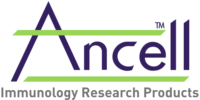ANC28.1 mAb used as a Control in a Modified Chandler-loop model developed to screen and assess drug toxicity
ANC28.1 mAb used as a Control in a Modified Chandler-loop model developed to screen and assess drug toxicity This system could potentially prevent disastrous clinical human trials like the TGN1412 (anti-CD28) one. “Extracorporeal human whole blood in motion as a tool to predict first-infusion reactions and mechanism-of-action of immunotherapeutics” E A K Fletcher, S […]
